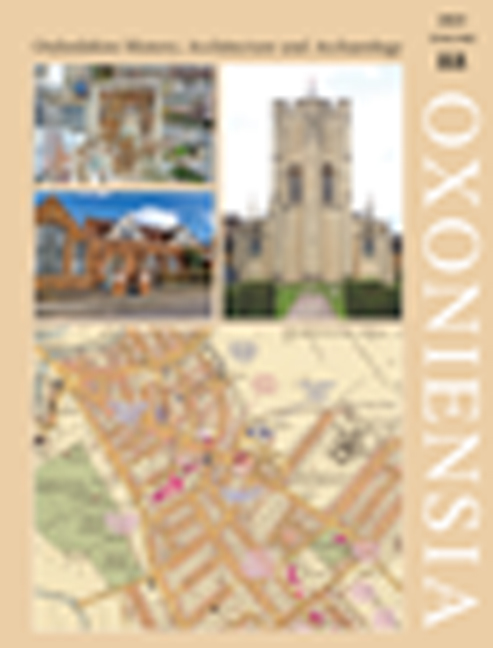A Neolithic Burial and Prehistoric to Anglo-Saxon Activity at Polar Technology, Eynsham
Published online by Cambridge University Press: 15 May 2024
Summary
SUMMARY
Excavation at the edge of a dense cropmark complex south of Eynsham uncovered features spanning the Neolithic to the medieval period. The cropmarks probably represent a monument complex that developed around the adjacent Eynsham causewayed enclosure, and the three earliest pits, associated with Decorated Bowl pottery (c.3770–3245 BC), may have been contemporary with the construction and use of the enclosure. Eight middle Neolithic pits associated with Peterborough Ware (mid-fourth millennium to early third millennium BC) were excavated. One contained the burial of a woman, accompanied by an oyster shell pendant and a whelk shell, both exotic items this far from the coast. The burial produced a radiocarbon date of 3340–3030 cal BC. Three pits dating from the earliest Iron Age, one possibly a waterhole, represent rare evidence for settlement of this period, and limited Roman activity was restricted to pits that were probably dug for gravel extraction. Anglo-Saxon occupation was represented by a sunken-featured building, and medieval evidence comprised further gravel pits, field boundaries and plough furrows.
Oxford Archaeology (OA) undertook an archaeological excavation in advance of construction of an industrial unit at Polar Technology’s headquarters at Oasis Business Park, Eynsham (NGR SP 42761 08768; Fig. 1). The site lay 1 km north-west of a northern loop in the River Thames by means of which the river circumvents the limestone outcrop of Wytham Hill before turning south to pass through Oxford. The northern boundary was marked by the Chil Brook, one of a number of minor watercourses that drain this flat agricultural landscape and flow eastward into the Thames, the confluence in this instance lying a short distance downstream of Eynsham Lock. Prior to excavation the site consisted of agricultural land, the northern part of which was crossed by a former railway line that had been tarmacked and used as a car park. The site was situated at c.66 m above Ordnance Datum on the Summertown-Radley gravel terrace of the Thames, a short distance off the alluviated part of the floodplain, which lies at c.60 m above OD.
The development area was situated partly within a scheduled monument, described in the listing as a ‘large and important concentration of cropmarks, mostly comprising Bronze Age ring ditches and barrows, and Iron Age/Roman enclosures and settlement sites’.
- Type
- Chapter
- Information
- Oxoniensia 88 , pp. 191 - 226Publisher: Boydell & BrewerFirst published in: 2024



